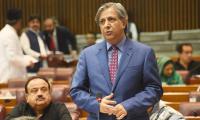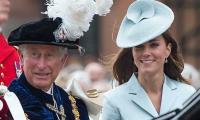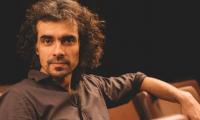Part - I
Side-effect
The writer is a poet and author based in Islamabad.
At the turn of the twentieth century, Indians had started gaining a new political consciousness. Some of them had begun to think within the broad new parameters of modern nation state(s) and republic(s) of people which were to be formed after the end of the British Raj – whenever that was to happen. It was obvious that a native empire could neither be restored nor was it desired.
The world was changing fast and, in some ways, changing for the better. Subjects were to become citizens after independence from the colonialists. But independence had to be fought for – and won. Therefore, we see that in reaction to British colonialism in that era, four discourses of resistance started taking shape in parallel in the South Asian subcontinent – the discourse of freedom, the discourse of revolution, the discourse of religious revival and the discourse of social reform. There were overlaps and intersections but largely these were four distinct discourses.
The discourse of freedom was propounded first by the Indian National Congress, founded in 1885 by theosophists led by a Scotsman, Lord Allan Octavian Hume, and his Indian compatriots including Dadabhai Naoroji and Dinshaw Wacha. In its discourse of freedom from the British, Congress was later to be joined by the All India Muslim League, founded in 1906 by Nawab Khwaja Salimullah, Sir Sultan Mohammed Shah Aga Khan III and Nawab Vikar-ul-Mulk besides others.
The argument for freedom was built incrementally from self-rule, limited autonomy, powers devolved to local structures while remaining within the British-dominated macro structure to, finally, a dominion status under the crown. However, it was clear to many that India would eventually become a sovereign republic or republics (as happened in 1947 when independence came about with the partition of the Subcontinent into two dominions).
Pandit Jawaharlal Nehru and Quaid-e-Azam Mohammed Ali Jinnah emerged as the most significant and successful of the leaders who championed this discourse. Mahatma Gandhi had used an amalgam of religious revival and social reform in his politics but all his efforts essentially either overarched or fell under the discourse of freedom. So did Neta Subhash Chandra Bose of the Indian Republican Army. His campaign would form a part of the discourse of freedom except that he believed that freedom could only be achieved through waging an armed struggle. For that, it was immaterial if foreign military help was sought to get rid of the colonial rulers.
Finally, as Nehru and Jinnah succeeded and freedom was achieved from the British, the discourse of freedom transformed into some local movements for liberation from the successive states of British India or struggles for self-determination in the peripheral lands of these countries. Bangladesh was the only secession that succeeded after the British left.
Running in tandem with the discourse of freedom was the discourse of revolution in the first half of the twentieth century. Here, revolution included freedom; but freedom for the advocates of revolution was not limited to the departure of the British. Freedom meant freedom from class subjugation, poverty, hunger, disease and dispossession. Both had to be fought for at the same time. That was a bigger ideal than the one Congress and the Muslim League pursued.
The Hindustan Republican Association, which later became the Hindustan Socialist Republican Association, was run by young people from Chandra Shekhar Azad, Ram Prasad Bismil and Ashfaqullah to Bhagat Singh, Raj Guru and Sukh Dev. They were romantic revolutionaries who paid in blood for their beliefs. Their popularity rose and became legendary – from the Kakori train robbery to the assassination of John Saunders. Their acts symbolised resistance to British rule for the youth across the South Asian subcontinent. But the formal revolutionary party with a theory came about with the establishment of the Communist Party of India in Kanpur in 1925. Smaller groups and factions had continued to work since 1920. Among its leaders were: M N Roy, Shaukat Usmani, R C Sharma, Nalini Gupta, Ghulam Hussain etc. Maulana Hasrat Mohani also announced his allegiance to the Communist Party and was the first to hoist its flag on his house in 1925.
The Communist Party theorised the need for freedom as the first step to bring about a socialist revolution in India. Initially it remained weak in terms of organisation but the material produced by its thinkers and ideologues inspired and influenced members of other political parties as well, including the Indian National Congress and some within the All India Muslim League. The Communist Party also witnessed splits but largely the socialist movement sustained itself and gained popularity among the newly emerging industrial labour as well as sections of the peasantry across India.
Today, we see remnants of the movement in South Asian countries in the shape of much smaller parties than before with a limited theoretical analysis of the global political economy, its impact on our region and the possible alternatives that we may adopt to rid ourselves of monopolistic capitalism.
The third discourse of resistance to colonialism was the discourse of religious revivalism. Sikhism and Zoroastrianism predated colonialism; although they were influential, they were small in numbers. We find Sikhs and Parsis contributing to the freedom movement and its different strands but not any significant religious revival among them. Christianity was popularised in India with the advent of the Europeans and the establishment of the British rule. It was new to the Subcontinent and its theology was borrowed from outside. It was Hindus and Muslims who saw revivalist movements gaining strength in their ranks as an alternative to colonial power.
Simply and crudely put, the argument of religious revivalists was that we lost our glory and freedom to the outsiders because we had strayed away from our divine faith and its practices. Extremism was born out of this quest for purity. Some Hindu revivalists considered Muslims as outsiders as well and campaigned for local converts to revert back to their original faith.
Muslim revivalists, interestingly, did not take pride in Muslim dynasties ruling India. Rather, they held them responsible for straying away from the tenets of Islam and therefore losing at the hands of British and consequently the identity and faith of Muslims is being threatened by the presence of non-Muslim majority in India.
The discourse of religious revivalism in the case of Islam was led by a range of people, from Maulana Hussain Ahmed Madni to Maulana Maudoodi. Later, new leadership emerged in the two countries. That is the only discourse today that not only survives but has gained strength. It couldn’t challenge the British as it challenges the independent states of South Asia. In India, it is the discourse of Hindu revivalism and in Pakistan and Bangladesh it is the discourse of Islamic revivalism. However, in India, as is being pointed out by some commentators, the Islamic parties stand for secularism while in Pakistan, they stand for theocracy.
The fourth discourse of resistance to colonialism, the discourse of social reform, was not seen as a discourse of resistance by most of the revolutionaries and religious revivalists alike. But it was the discourse of social reform and intellectual renaissance professed and promoted by the likes of Sir Syed Ahmed Khan and Raja Ram Mohan Roy in the nineteenth and early twentieth centuries that transformed the Indian thought process and the way Indian society worked. The two gentlemen mentioned here and their fellow travellers recognised the stage of history where their people stood, and the demands of a modern world for their people to even survive.
We have arrived at a similar stage today. It is time to be patient in the face of criticism and carry on like Sir Syed Ahmed Khan and his companions and encourage reform movements in our schools, universities, offices, factories, media and public spaces through a combination of intellectual work and social service. Neither anger nor rhetoric will help.
To be continued
Email: harris.khalique@gmail.com
An aeroplane of the national flag carrier of Pakistan is seen in this file photo. — AFPWhile Pakistan considers...
Representational image of a graph depicting various variables. — APP/FileInitiated by the centre and fiercely...
In this picture taken on April 16, 2023, people throng a market area during shopping in Lahore. — AFPOne of the...
Honour crimes also target men. In Sikandar Ali Lashari vs The State, SHC upheld conviction passed by ATC for honour...
If Sindh earmarks Rs20 million per police station, it will cost only Rs10 billion to make them effective first...
A complex and difficult policy environment seems to be highlighted by US’s recent application of sanctions on...







